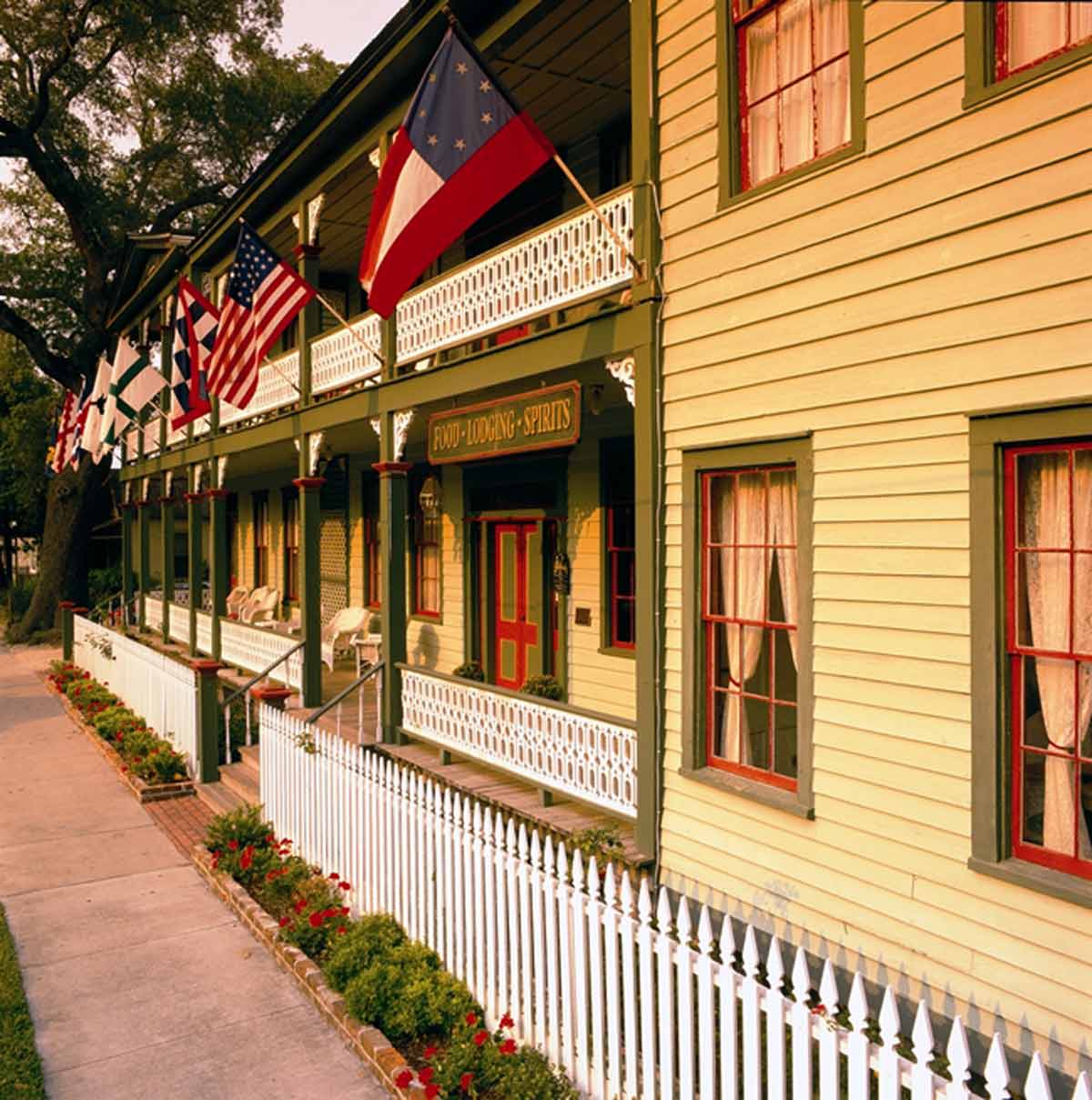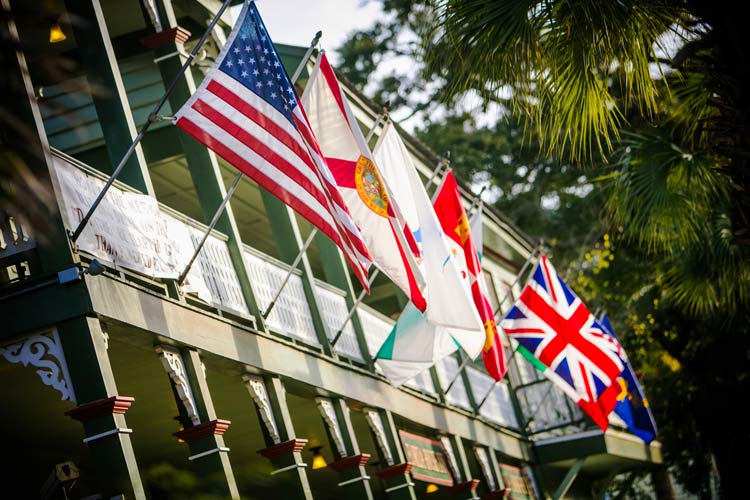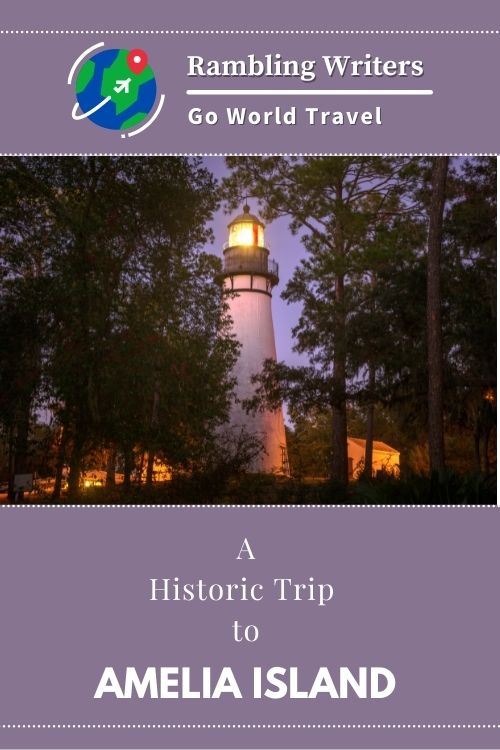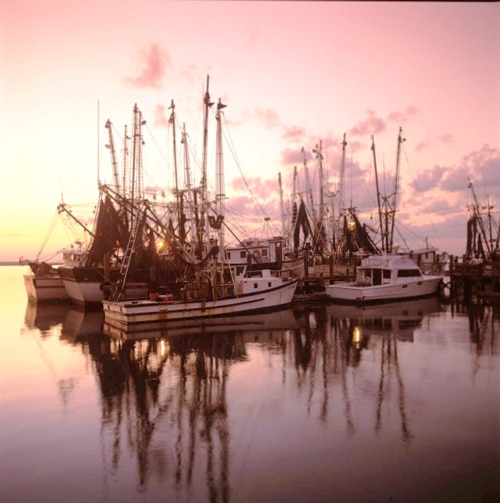
It’s a town time forgot — or maybe it just refused to move forward. Serene and unpretentious, Amelia Island remains in the 1900s — reveling in its long, colorful history, quite aware it no longer has to prove anything to the rest of the world.
Therein lies the charm of this tiny stretch of land, 13 miles long and two miles wide, just off the northeastern tip of Florida. And abundant charm it is.
Most visitors come for the beautiful beaches, award-winning golf and tennis, luxurious resorts and other accouterments of world-class vacation destinations.
For me, the main attraction is the seaport village of Fernandina Beach where a sense of Victorian splendor still abounds. Barely touched by t-shirt shops and cell phone stands, the town pays homage daily to its elegant past.
Also absent is the caterwaul of car horns. They’re just not there. The downside is that drivers stop their cars in the middle of the street to chat with a friend. On the other hand, no one seems to mind.
A place that has not heard of Benetton’s, the island’s modern history dates back to 1562, when it was discovered by the French. Amelia progressed as far as the turn-of-the-20th-century and stayed there. Why not? It was at its peak of prominence and prosperity. Close your eyes and you can still hear the sound of trolleys casually clunking along cobblestone streets.

Amelia, Island, Florida Pays Homage to the Many Countries That Once Ruled There
As the only territory in the United States to have seen rule under eight flags, Amelia Island still retains many of their influences, from French, Spanish and British to pirates, patriots and Confederates. Often summed up as “the French visited, the Spanish developed, the English named and the Americans tamed,” (conveniently overlooking its very prominent position as pirates’ playground during the early 1800s), Amelia not only has been at the epicenter of Floridian history but international politics as well.

But that was then and now still seems like then. Hailed as “The Queen of Summer Resorts” by American Resorts magazine in 1896, the island soon after lost its tourist base to stops further south. As a result, mass modernization bypassed the island — a disguised blessing that allowed Amelia to remain an authentic Victorian seaport village.
Fifty blocks of green-canopied streets winding around the island’s historic downtown area house ever-gracious 19th-century Victorian “cottages.” This exclusive Silk Stocking District of Amelia’s Golden Age has now found a home on the National Register of Historic Places.
Street after street, house after house, enchants, charms and captivates visitors, be they on guided tours, informal strolls or atop a golf cart.
Most of the homes, ablaze in multiple shades of tans and turquoise and mints and mauves, sport some strange appendage on the roof alternately identified as a turret, cupola, gazebo or belvedere. Wraparound porches adorned with decorative balustrades and whimsically designed ginger-breading give each structure its personal charm and distinction.

The Historic Homes of Amelia Island, Florida Boast a Variety of Victorian Architecture
Although several homes are still privately owned and occupied by original families, many have been transformed into enchanting bed and breakfasts, decked out in Queen Anne, Italianate, Chinese Chippendale or any number of other building motifs fashionable at the time. This mini-course on Victorian architecture belongs on any itinerary as much for its sightseeing value as for the gracious accommodations.
Hospitality gushes through every lush towel and hand-designed window treatment of Hoyt House, a 1905 canary yellow and periwinkle blue Victorian dollhouse mother-henned over by owners Todd and Jamie Cohen. Re-capturing the tranquility of the Victorian era is unavoidable as you stroll the resplendent garden, stop for a wistful moment at the gazebo, sway softly on the porch swing or sprawl out beneath the 300-year-old oak. Sipping of a mint julep is optional.
For even a grander step backwards, drop by the Florida House Inn, whose 1857 origin makes it the oldest tourist hotel in Florida. Keep an eye out for one of innkeeper Ernie Saltmarsh’s prize quilts, which may be found adorning beds, walls, sofas and occasionally other unexpected objects.

Adjacent to the romantic courtyard, with its long brick circular fountain gurgling seductively, the old Southern custom of boarding-house-style dining is resurrected in the same dining room where the turn-of-the-century Carnegies came for dinner every Saturday night.
Each B&B comes with its own colorful history, a past inextricably linked to the development of the Island, the state of Florida, and often the country. Be sure to join a walking tour sponsored by the Amelia Island Museum of History, Florida’s first oral history museum — which itself was privy to a lot of it first-hand in its former role as a county jail during the 1870s.
The guides not only take visitors inside the residences but inside the people whose ambitions and traditions, dreams and desires, frailties and foibles shaped the homes they lived in and the island they lived on.
A stroll down Centre Street, with or without a guide, reinforces the connection with yesteryear. A Norman Rockwell painting of a town, Fernandina’s horse-drawn carriages, outdoor cafes and quaint shops decked out in resplendent Victorian finery reflect an earlier easier era. Just the presence of individualized shops is a welcome antidote to the sameness of suburban malls.
The Palace Saloon is One of the Most Enticing of Amelia Island, Florida’s Historic Structures
And then there’s the Palace Saloon. Operating since 1903, it is the oldest saloon in Florida with much of the interior dating back to 1878, when the building was first constructed. Although its choice of libations may have changed from Red Cross Rye and Turkey Mountain Corn Whiskey to Miller Light and Sex on the Beach, little else has.

The original swinging doors, embossed tin ceiling, player piano, brass cash register and opulent 40-foot mahogany bar embellished with hand-carved figures of undraped women still draw the thirsty, the curious and the fun-loving. The former watering hole to Carnegies, Rockefellers and du Pont fam,ilies as well as the shrimpers and seamen who dominated the port city, is now the tavern of choice for tourists, locals, shrimpers and seamen who still frequent Amelia Harbor.
Indeed, Amelia Island’s thriving shrimp industry is yet another throwback to its glory days. The birthplace of the shrimping industry still earns accolades as over two million pounds of shrimp cross Fernandina docks each year. However, they no longer sell for the nickel a pound they cost in 1906.

A walk by the harbor at sunset captures the essence of Amelia Island. The tall masts of the shrimp boats are lined up, silhouetted against the sinking sun, further testimony that the island remains unwilling to give up its past.
If You Go
For more information, call 1-800-226-3542 or visit the Amelia Island website.
- Broward County, Florida: When the Winter Sun Hides Behind a Cloud - April 16, 2024
- Nature is Neat in Broward County, Florida - April 1, 2024
- Margaritaville: A Time-Honored Memorial to Jimmy Buffett - March 15, 2024

